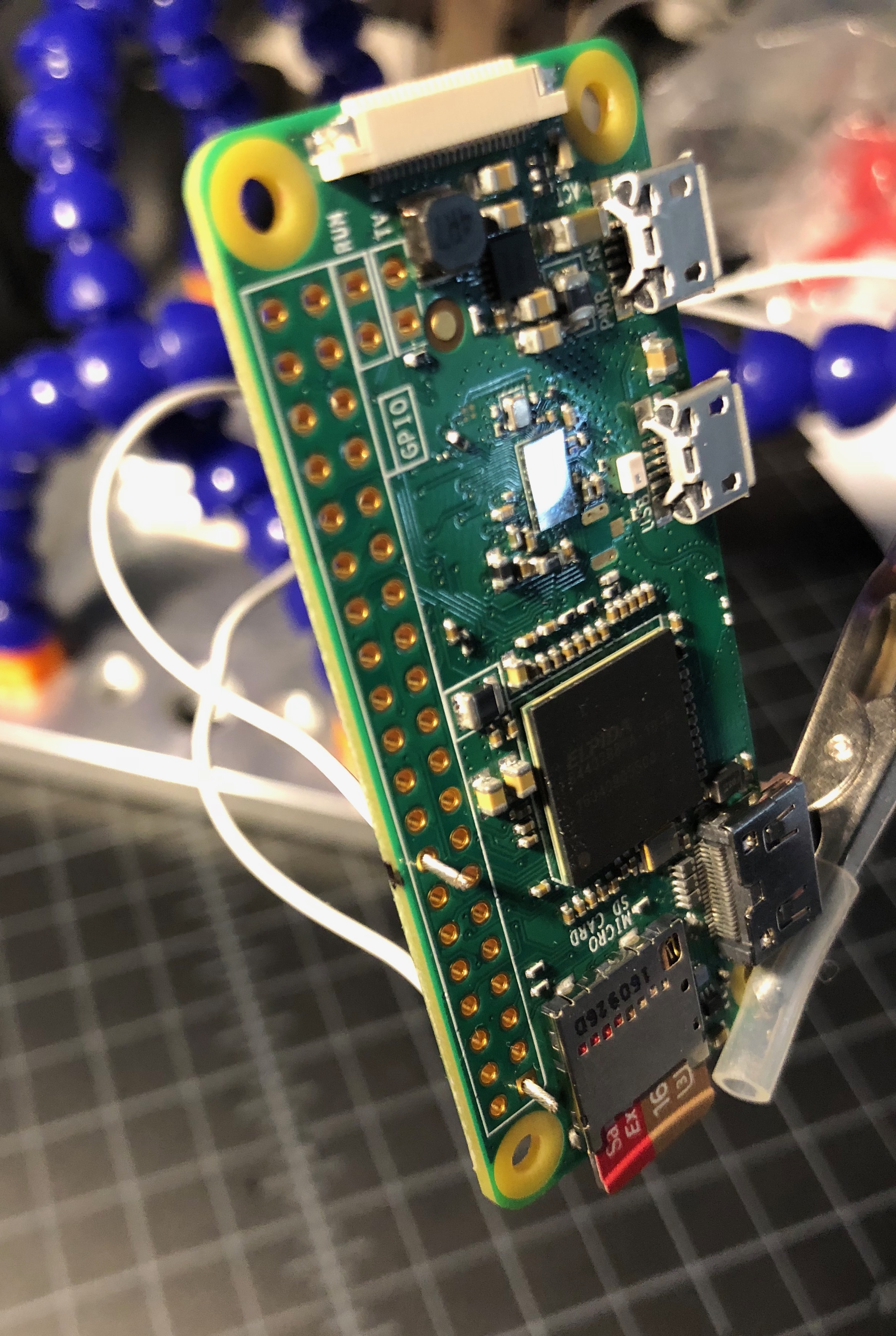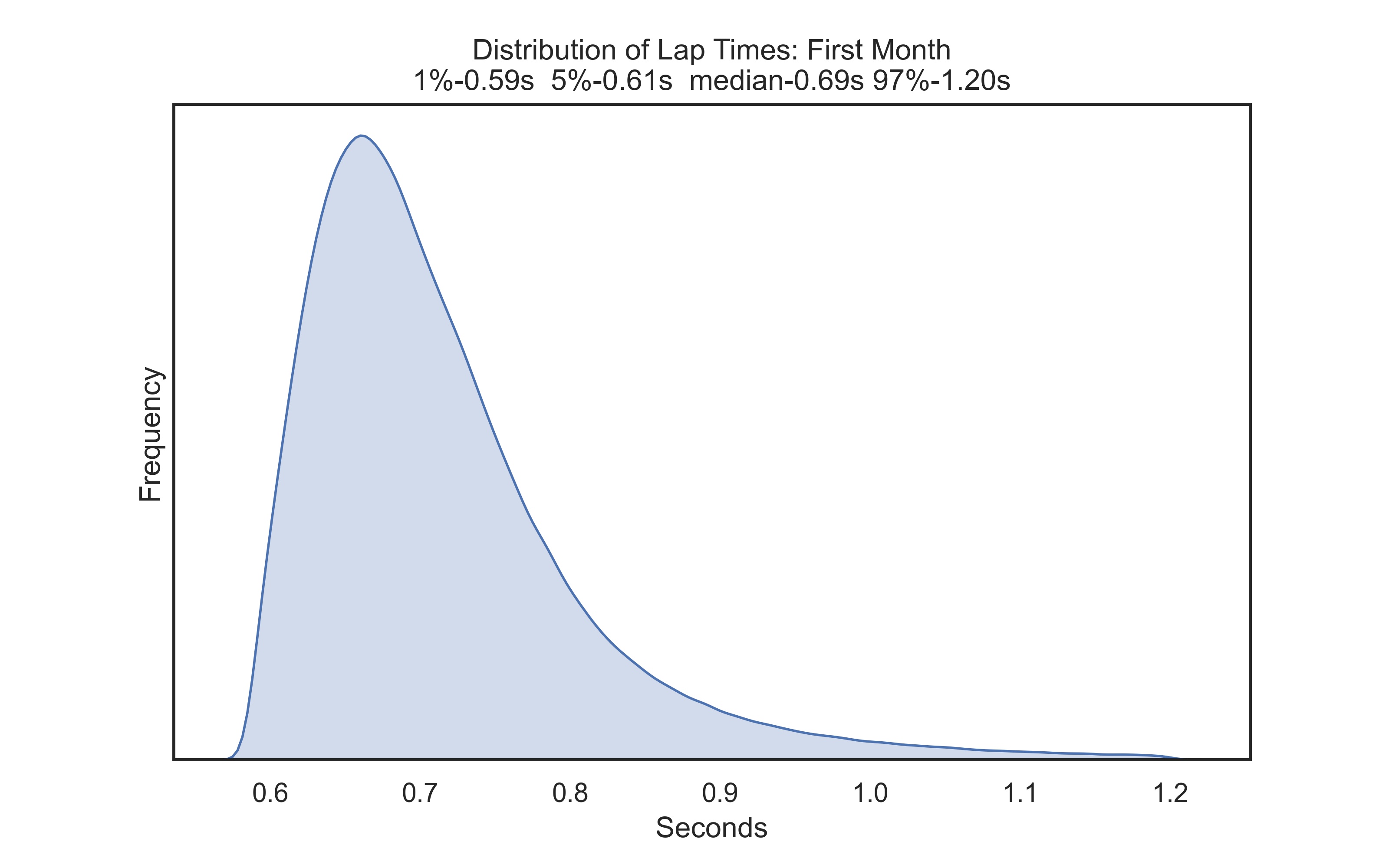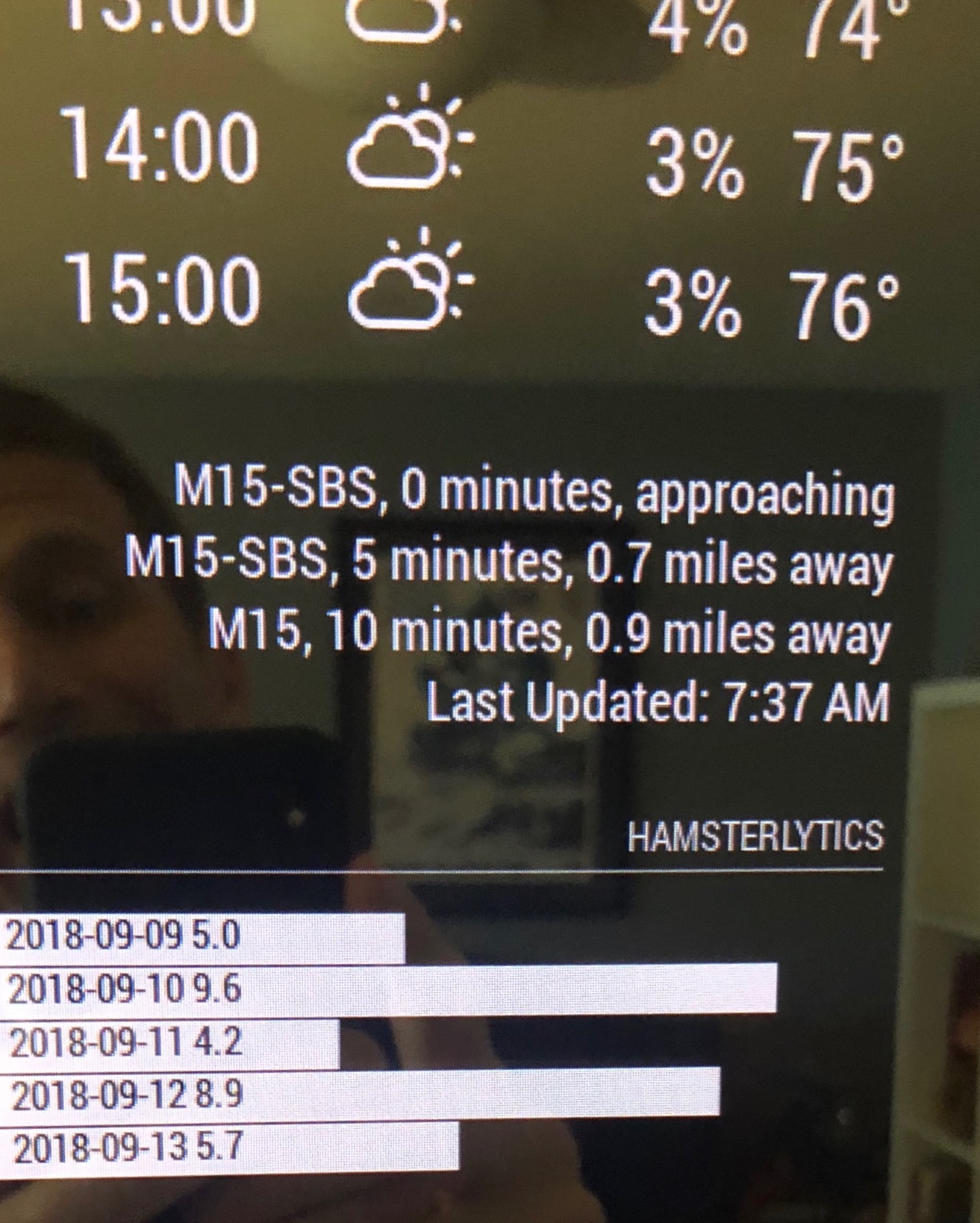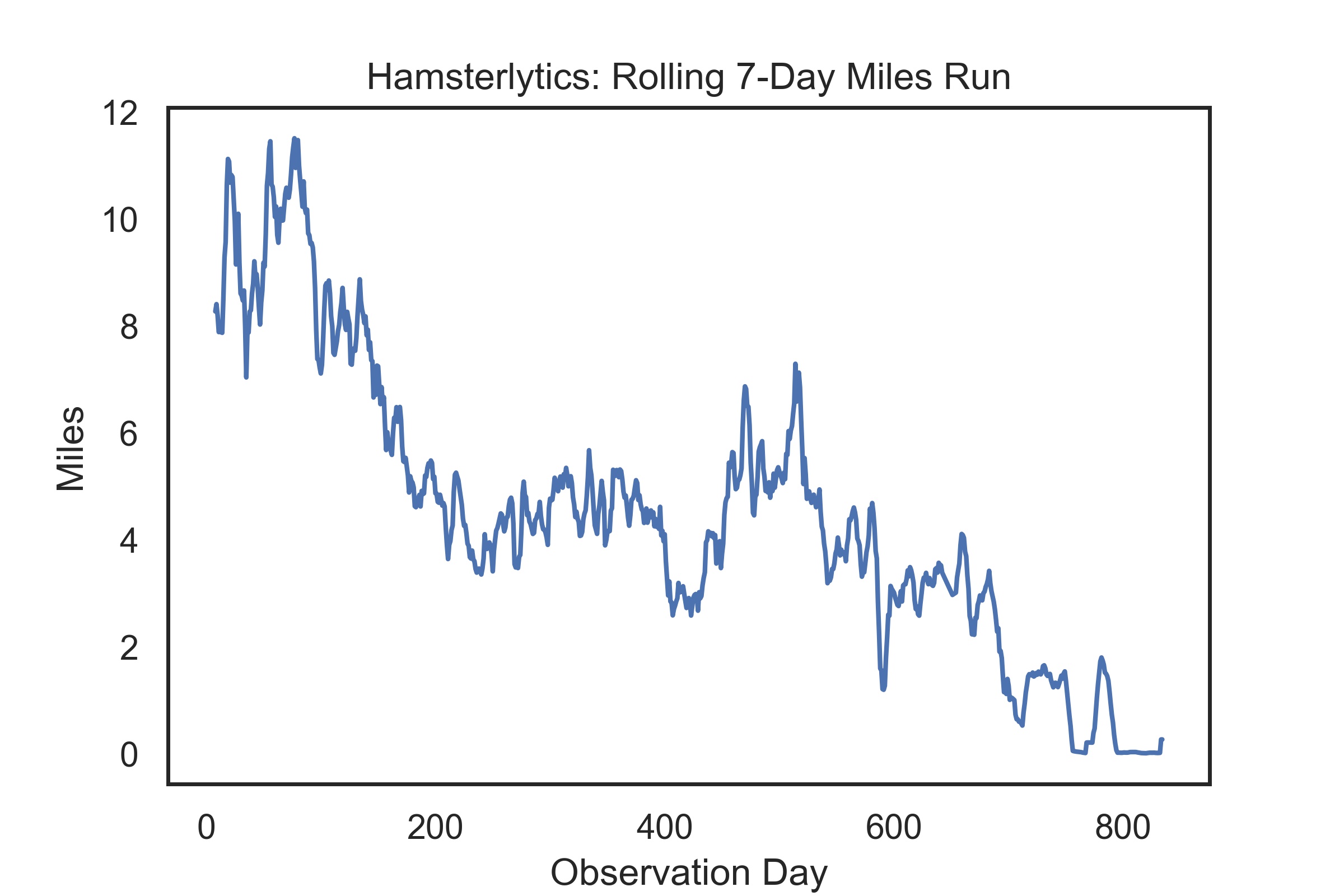🐹 Chip the Hamster's Long Run
We always liked our NYC neighborhood, but we wished for a Citibike dock, a Chipotle, and for a Whole Foods to open. We also hoped OTB ("Off Track Betting") might move on. Improbably over the years these wishes all came true. OTB was replaced by a huge Petco, which inevitably created new unexpected issues.
"Dad, I want to adopt a cat" (Mom is allergic). "Dad, I know we just went yesterday, but can we go back to Petco again?"
"Dad, I really really want a hamster."

While consulting the Internet we discovered White Wolf Critters in Corum, NY. Laurinda is a wealth of knowledge and very serious about what she does.
It was an involved process to get on the wait list, acquire and approve a cage, wait for the hamster to have a litter, drive to pick up the hamster, etc. For the kids it proved commitment, required patience, and heightened anticipation.
Mom was most enthused that if the hamster was a bad fit, or the kids got in real trouble, Laurinda was willing to take the hamster back for re-homing.
There were some false alarms about pregnancy, and by the time Sandy and Panda produced a litter anticipation had reached a fevered pitch.
The kids got in the habit of checking White Wolf daily for updates and were thrilled when the good news finally arrived.


The next step was to conquer the hamster draft. Draft order was based on waitlist position. To help us rank our choices Laurinda posted photos of all the hamster babies.
We had the #2 pick. Our top choice was Chip.
His heterozygous silver brother Harry went first. We were thrilled that Chip would be coming home!

When Chip first got home he really didn't know what to make of his Ware Flying Saucer...
...but only 7 hours later he had mastered it and was flying!
There are a couple important points here:
First, the flying saucer was not affixed to the cage. As Chip ran quite vigorously the saucer would slide to the corner of the cage, start grinding, and the sound would resonate throughout the home.
Second, hamsters are nocturnal, so it was like having someone operating an angle grinder in your living room while you were trying to sleep. Much to the kids dismay, he slept soundly throughout the day.

So we did as one does, we acquired a better wheel, the Silent Runner 9", which bolts to the cage, and we setup a system to log Chip's activity.
To build the logger we hot glued a neodymium magnet to the wheel, acquired a reed switch, and soldered it to a $10 Raspberry Pi Zero W ("Raspi"). We put the switch on a popsicle stick and attached it to the cage at a sensible air gap to the magnet. Every time the wheel revolved it would trip the switch, which sent a signal to the Raspi, which would save a timestamp. Data!
The new setup worked great. The loudest sound that came from the cage was Chip's tiny feet pattering vigorously.
The minimalist logger build was surprisingly straightforward and reliable. We knocked it out quickly and simply because we wanted to start collecting data before it was lost to the ether.
According to the first night's data Chip ran...
7.5 human miles. There was some disbelief at this number.

The first thing we checked was the distribution of lap times. Looking at the first month's data, he would complete a lap in 0.69 seconds, but if he really stretched he could get down to 0.59 seconds. When he was tired he would slow down or walk, which is why the distribution has a long tail of slower lap times. The data is normally distributed and lacks implausibly short lap times, which might indicate the switch was being falsely tripped by the powerful magnet, overstating the number of laps he was completing.

The second thing we checked was how much he ran per hour. The boxplot summarizes the distribution of results per hour over the first month. If you haven't read a boxplot, in short, most of the results are in the box, the horizontal line in the box is the median, the whiskers give you a sense of the range. Chip would run about 1 to 1.75 mi for 6 or 7 hours a night starting at 9pm (21 in the chart) and typically ending in the 4am hour. He was not running extremely fast, but he was running most of the time he was awake.
The final thing we checked was other data on the Internet. This blog observed 8 mi a night, Wikipedia has 5.6 mi for hamsters, 9.9 mi for lab mice, 19.0 mi for wild mice.
Chip was a pure bred Syrian hamster who ran with so much enthusiasm that it inspired us to track his activity. Having checked the math and reviewed the data, we do not struggle to believe he really was running that far.
During this initial phase living with Chip was, I imagine, vaguely like living with Usain Bolt. It seemed like he was interval training: he would start running, then push faster and faster which you could audibly hear, before he hit his max, tapered off, and finally stopped for a break. Over and over.
While the photo might make him look Schwarzenegger jacked, most of it is seeds he has hoarded in his cheek pouches. When he was young he was particularly enthusiastic to climb the cage as a means to get closer to us.
It did cross my mind that signing his breeding rights away might have been a mistake.

He ran hard at night and recuperated during the day. Here he made his nest near his water bottle so he could get a drink without getting out of bed.
We really enjoyed our nights with Chip...it was hard to wake up and not be able to check on him or play with him.
To help address this we enhanced the logger to summarize his overnight activity on our separate Raspi Magic Mirror. The mirror displays the time, weather, calendar, and bus status and it's a great way to start the day. Adding "hamsterlytics" gave us a quick way to confirm he was alive and had not gotten loose, while not disturbing his sleep, and it was fun to see if he had set a new personal best or not.


His daily mileage peaked at 0.38yrs old, which is about 13yrs old for a human. On that single night he knocked out a remarkable 14.2 mi.
It was a bit disconcerting to watch his mileage peak and gradually decline. Was he injured? Did he need different food? Speak to me hamster! I will try to make it right!
Ultimately we believe he just grew up, perhaps lost a bit of his teenage pep, and in total he had a long, happy, and productive life.
In aggregate he averaged 4.6 mi per day. The early high mileage days seem to clearly be a function of youthful exuberance.

Over the course of his life Chip ran about 4,008 mi, more than enough to run across the country. Dividing his journey into fifths:
- 7.0 mi average, his most productive period, he traveled from Montauk across the entirety of NY, southern Ontario, Canada, both peninsulas of MI, and entered WI, pausing in Mellen
- 5.2 mi average, finished WI, crossed MN and SD, and ended in Big Horn, WY
- 4.5 mi average, finished WY, crossed ID, and ended in Imlay, NV
- 3.9 mi average, finished NV, entered CA and swung out to San Francisco to complete the transcontinental journey, and ended in Bakersfield, CA
- 1.5 mi average, progress is slower now, but continued south thru LA and San Diego, before crossing into Tijuana, Mexico

Chip was healthy up until he developed a double ear infection. He improved a bit but never really recovered. It gave us the chance to say a long goodbye. He was just a couple days shy of 2.5yrs old when he passed. This is pretty old for a Syrian Hamster, and equivalent to about 83 in human years.
He passed while we were driving on a cross country journey back to NYC, which concluded our Pandemic: Season One. When we realized he had gone we held an impromptu wake featuring tracks like Born to Run.
We miss you little buddy, we will never forget you.
Build your own?
- Our logging code is here
- Getting started with Raspi is all over the Internet, but you might start here
- To analyze the data we used scp to copy the data over wifi to our computers where we could analyze it with pandas and jupyter
- The code to display data on the Magic Mirror is here and uses this module
- There are a couple additional photos here
- Consider shopping at Adafruit
Good luck!
🐹 Contact
Addendum
- The 3rd pick of the Hamster Draft was "Little Bear". His family saw the site via Laurinda's Blog and reached out. Little Bear made it a little over 2 years before expiring. He also enjoyed wheel running. I was interested to hear that he liked to sit in laps for hours at a time...Chip was too high strung to ever sit still. I think this info on his brother reinforces that Chip was genetically wired to run. Based on the note, Little Bear is also missed by his family.
